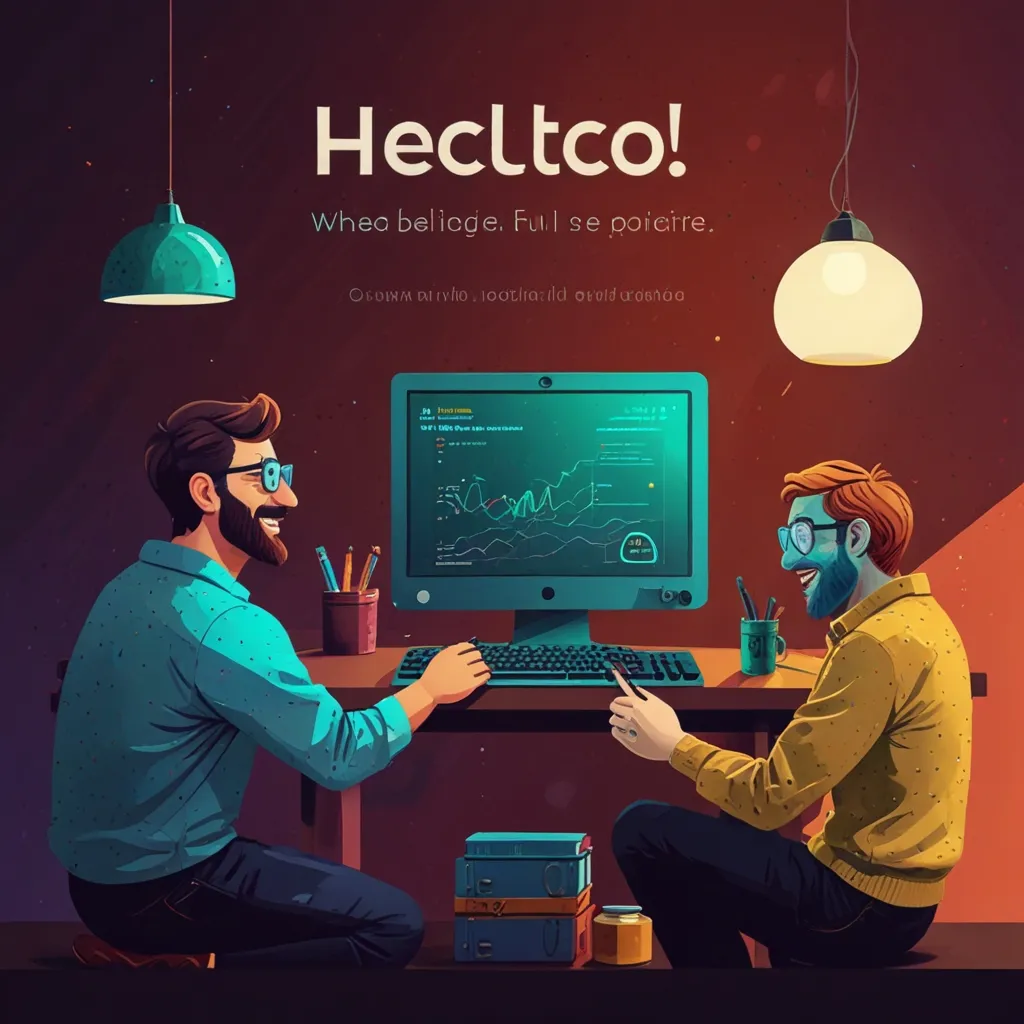So there I was, diving headfirst into the intricate realm of libsigrok, a noteworthy venture when you’re knee-deep into signal processing and trying to make sense of the chaotic dance of digital signals. Libsigrok is that secret sauce for anyone dabbling with logic analyzers and oscilloscopes—tools of the trade for modern-day signal wizards. Imagine a language that lets you whisper commands into the ears of these devices, nudging them to reveal their deepest secrets. That’s libsigrok for you.
Like many developers who cling to the comfort of their favorite programming socks, I started exploring from a purely C perspective. If you’ve dabbled in C, you’ll appreciate the uncanny precision and control it grants, though it feels like walking a tightrope sometimes. One of the most charming aspects of libsigrok in C is the breadth of devices it supports—it’s like a universal translator for a magnificent variety of lab gadgets.
Picture this: you’re standing at your workbench, a logic analyzer blinking at you, taunting you to make it do your bidding. The libsigrok calls come in handy here. First, you carve out a new context with sr_context_create(), your digital workspace where all magic begins.
#include <libsigrok/libsigrok.h>
#include <stdio.h>
int main() {
struct sr_context *context;
sr_context_create(&context);
sr_session_open(context);
// More intriguing commands will follow.
sr_context_destroy(context);
return 0;
}
In these moments, I used to imagine myself as a sort of scientist-meets-coder, waving through complex structures and signals. And once the context is up and running, there’s a symphony of operations you can orchestrate—scanning devices, probing drivers, and even diving directly into capturing data.
Now, let’s step away from writing more C code—because let’s be honest, it gets tedious explaining it to non-coders over coffee break. The beauty of libsigrok is that it’s not just married to C; it mingles freely with Python too. It’s like having your cake and eating it. Python with its simplicity adds a layer of ease to the complex world of signal processing. You harness sigrok in Python leveraging sigrokdecode, and it turns into a playground of adventurous possibilities.
from sigrokdecode import Digital
print("Hello, Signals!")
sigrok_device = Digital(name='Test Device')
sigrok_device.run()
This snippet is your gateway to turning curiosities into tangible results without weaving through the intricacies of pointers and memory management that C often demands.
In this land of signal processing, when Python sweeps in, it’s like switching from a two-decade-old tuner to Spotify. For bloggers and developers tirelessly syncing with gadgets’ pulse, scripting in Python feels liberating. It provides this dynamic, easy-to-read interface that can soothe even the most complex libsigrok operations.
The world doesn’t stop there, though. Alongside C and Python, languages like JavaScript and frameworks like Node.js are stepping into the limelight, ready to take their place in signal processing. With WebUSB APIs, you dream up browsers talking to oscilloscopes and logic analyzers—things that were once reserved for specific software environments.
navigator.usb.requestDevice({ filters: [] })
.then(device => {
console.log(`Device selected: ${device.productName}`);
})
.catch(error => {
console.log(`Error selecting device: ${error}`);
});
Isn’t that exciting? The once unimaginable has become your playground, with signals unfolding right in your browser. It’s witty, charming, and shockingly efficient—not unlike using libsigrok to craft your very own tech symphony.
Exploring further creeps you into spaces where golang awaits, offering a strong, statically typed alternative. Picture it as the sturdy oak in a world of reeds, solidifying your adventures in signal processing’s vast, windy landscape.
import (
"fmt"
"github.com/sigrokproject/libsigrokcgo"
)
func main() {
fmt.Println("Starting Golang adventure with libsigrok!")
libsigrokcgo.Initialize()
// Hooking up more golang-libsigrok magic here
}
Each language and framework opens avenues, narratives, and even challenges you hadn’t considered—the choice of tools becomes as personal as the fluffiness of your headphone cushions. Within this ecosystem, there’s a universal truth: the world of signal processing is as diverse as it is engaging. And the flexibility of libsigrok across different languages plays into this diversity with seamless grace.
This journey isn’t just about code. It’s about understanding the nuances of signal interactions, diving into the curious buzz of captured data, and pulling a story from the waves. Signal processing becomes an art—a methodical, elegant practice. And with libsigrok by your side, it’s as if you have the conductor’s baton, ready to lead a precision-engineered orchestra.
Next time you’re pondering what gives life to those blinky, otherwise inscrutable devices on your workbench, remember there’s a bridge—a library called libsigrok—that makes it all intelligible, all dynamic. Whether your fingers find comfort in C, Python, JavaScript, or Go, there’s a way to bring logic analyzers and oscilloscopes into a seamless conversation, making this vast, exciting playground yours to explore and master.
So, for anyone keen to unravel the mystery of ones and zeros, libsigrok offers not just a library, but a key to understanding the whispers of signals across an electrifying world of devices, languages, and untold possibilities.






